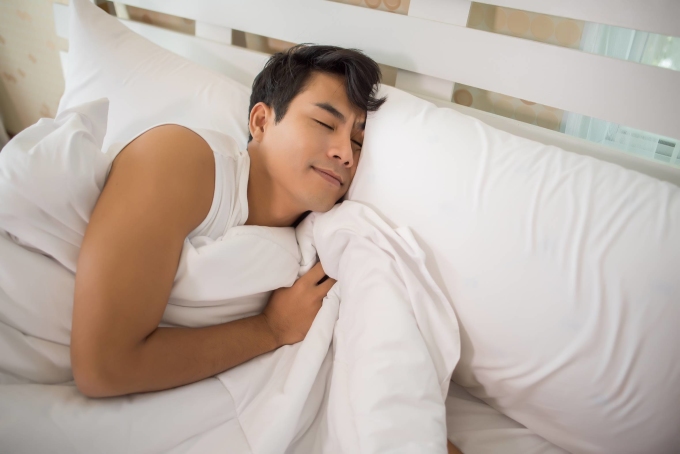Lying on your back, keeping your head elevated and a pillow under your knees reduces sleep apnea. Sleeping on your side helps your lungs function well.
Your favorite sleeping position can help you sleep comfortably all night long. However, some positions can cause or aggravate breathing problems. Here are some ways to help reduce snoring and obstructive sleep apnea.
Sleep on your side
Sleeping on your left side, with a pillow under your head and between your legs, helps your lungs function best. In this position, the effect of gravity helps blood circulation. This is also the best position for people who snore due to sleep apnea.
Obstructive sleep apnea can disrupt the balance of carbon dioxide and oxygen in the blood, leading to high blood pressure and cardiovascular problems. In some cases, it can lead to dizziness, high blood pressure, confusion, and cardiac arrest.
Sleeping on one side all the time can cause muscle fatigue, so alternate sleeping on both sides. Sleeping on both sides can help reduce sleep apnea symptoms and improve back pain.
However, side sleeping can cause shoulder or neck pain for some people. Using pillows and mattresses designed for side sleeping can help align the spine. Sleeping with a pillow between your legs can help relieve back pain for people new to this sleeping position.

Sleeping on your side helps your airways function properly. Photo: Freepik
Lie on your back with your head elevated.
Lying on your back with your head elevated and a pillow under your knees is suitable for people with sleep apnea. The high pillow prevents the tongue from sliding down the throat, allowing air to flow straight down to the lungs. A pillow under your knees helps align the spine and reduce pain.
Lying on your back without a pillow behind your neck and shoulders can make symptoms of airway obstruction worse. Lying on your stomach is also not recommended, as it restricts the free flow of air into the lungs. At this time, the body weight presses on the lungs, limiting the movement of the rib cage and diaphragm.
Sleep-related breathing disorders
Obstructive sleep apnea : People with obstructive sleep apnea stop breathing during sleep and may wake up gasping for air.
Chronic obstructive pulmonary disease (COPD) : Affects the lungs and airways, causing difficulty breathing. People with COPD often cough, wheeze, or feel short of breath, making it difficult to sleep.
Anxiety : People with anxiety disorders often have difficulty sleeping.
Sinus or nasal passage problems : Congestion from allergies, rhinitis, or other conditions that affect the nasal passages makes it difficult to breathe, especially when lying down.
Heart failure : Causes shortness of breath and worsens as the disease progresses, shortness of breath may increase when lying on your back.
People with a weak diaphragm may find it difficult to breathe when lying on their back.
Le Nguyen (According to Sleep Foundation )
| Readers ask questions about respiratory diseases here for doctors to answer |
Source link





![[INFOGRAPHIC] Open-back headphones, look like a... pill](https://vphoto.vietnam.vn/thumb/1200x675/vietnam/resource/IMAGE/2025/7/16/cd63f007ad404018aa504c1009ce19ba)
































































































Comment (0)